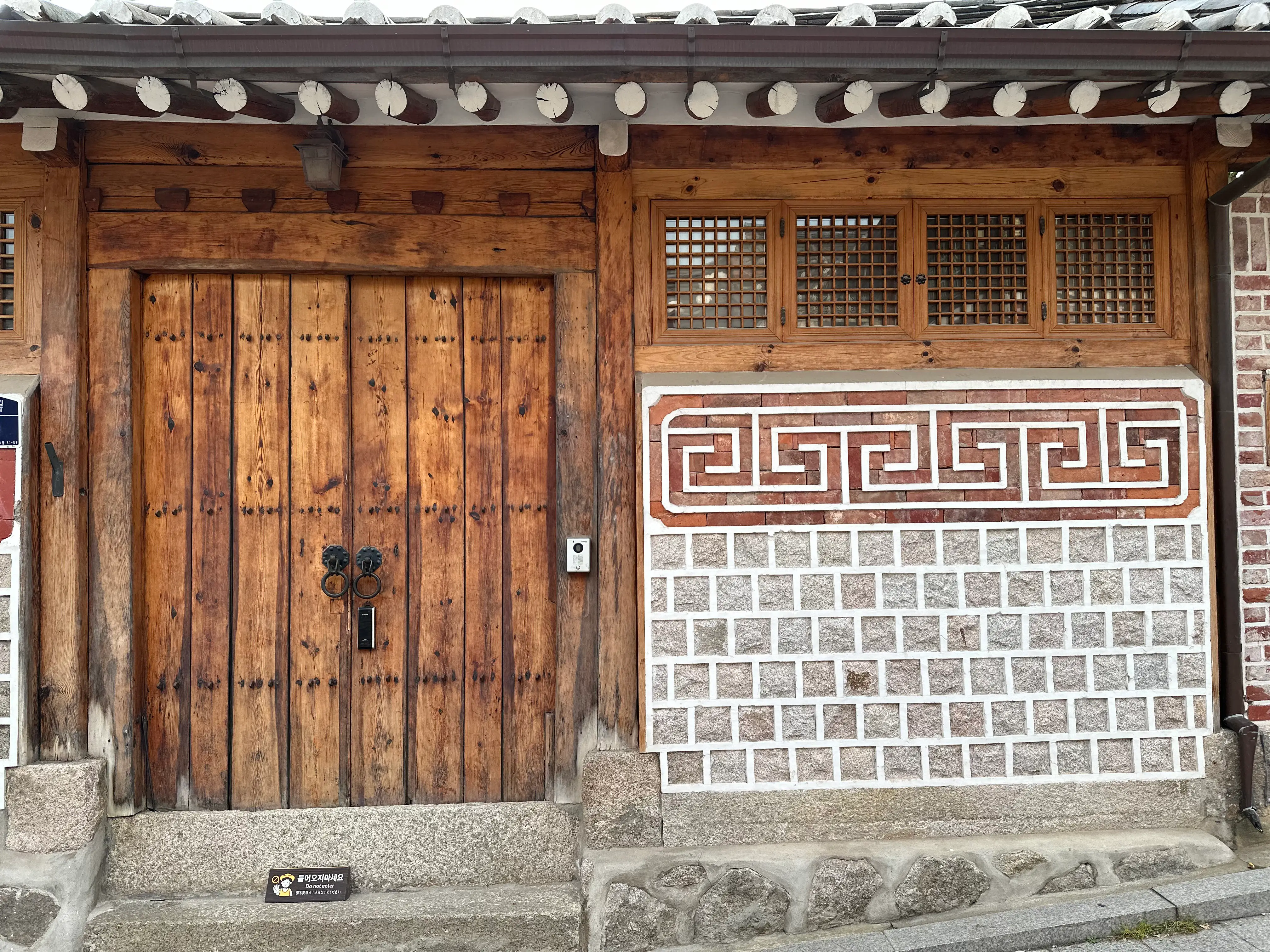Bukchon Hanok Village is a special place that preserves the landscape of traditional Joseon hanok houses from before the urbanization of Seoul in the early 1900s. Today, these hanok houses are nestled among modern buildings, creating a unique ambiance. It is one of the most visited tourist destinations, along with places like Myeongdong, Gyeongbokgung Palace, Gwanghwamun, Insadong, and Changdeokgung Palace. For those visiting Seoul, here are several useful tips and information to keep in mind before your trip.
How to go buckchon hanok village
Getting to Bukchon Hanok Village is quite easy. Simply search for Anguk Station (Seoul Subway Line 3) on Google Maps and make your way there. Exit from Anguk Station at Exit 2, and you’ll find yourself on Bukchon-gil, a straight road extending north. Unlike places like Gyeongbokgung Palace or Changdeokgung Palace, Bukchon Hanok Village is not a designated tourist site with ticket booths or entrance gates; it’s a vast village nestled within the city.
Therefore, there’s no separate admission fee to pay. Just follow Bukchon-gil without any worries, passing by lovely cafes, clothing stores, hanbok rental shops, restaurants, and bars. As you continue, you’ll come across a steeper incline. Keep climbing, and you’ll soon start seeing traditional Korean hanok houses. That’s when you’ll truly enter Bukchon Hanok Village, and you’ll be greeted by the sight of incredibly beautiful hanok houses right in front of you.
* The red straight line on the map below represents Bukchon-gil.
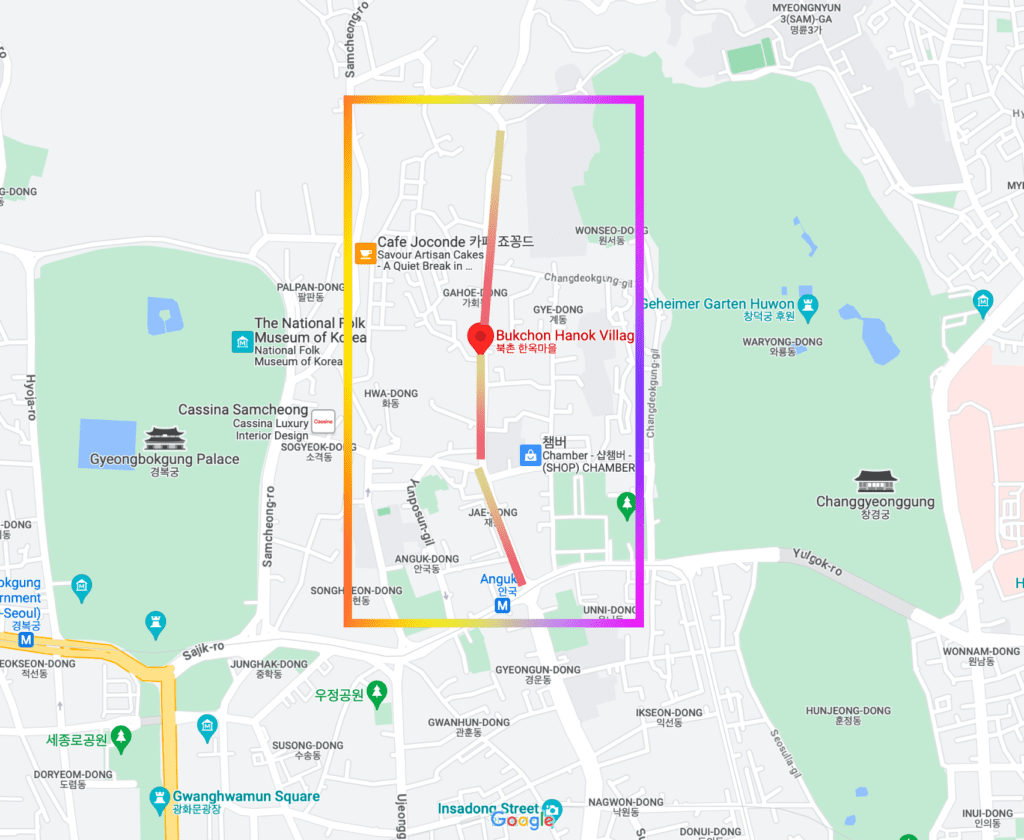
Buckchon hanok village Tourism tips 1 : Get a Tourist Map
When you exit from Exit 2 and walk a bit, you’ll come across a facility called “Seoul Tourism Police” designed for the convenience of tourists. There, you can pick up a map provided by the guides. The map not only covers Bukchon Hanok Village but also highlights various tourist attractions, restaurants, and shops in nearby locations like Gyeongbokgung Palace, Changdeokgung Palace, and Insa-dong, all well-marked and conveniently explained in English. No need to worry about getting lost, right?
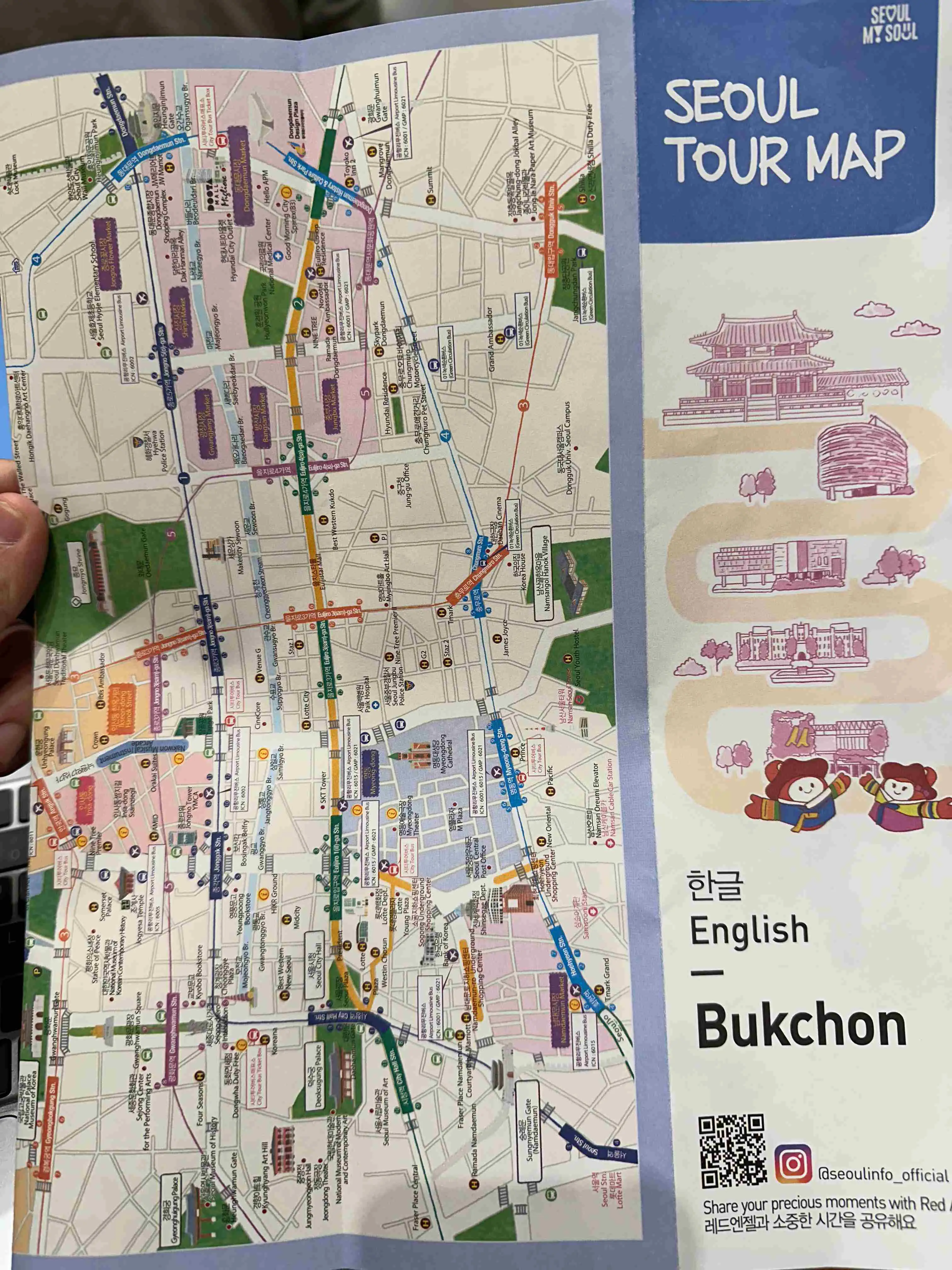
Buckchon hanok village Tourism tips 2 : Rent a Hanbok in Advance
As you stroll along Bukchon-gil, you’ll notice charming hanbok shops welcoming you on practically every block. Since Bukchon-gil itself is so picturesque, it won’t take long before you find yourself within the Hanok Village. However, once you ascend to the hanok area, there are no hanbok rental shops, so if you’re eager to don a hanbok and capture photos in the hanok setting, I highly recommend renting one in advance at the entrance shops before making your way up.
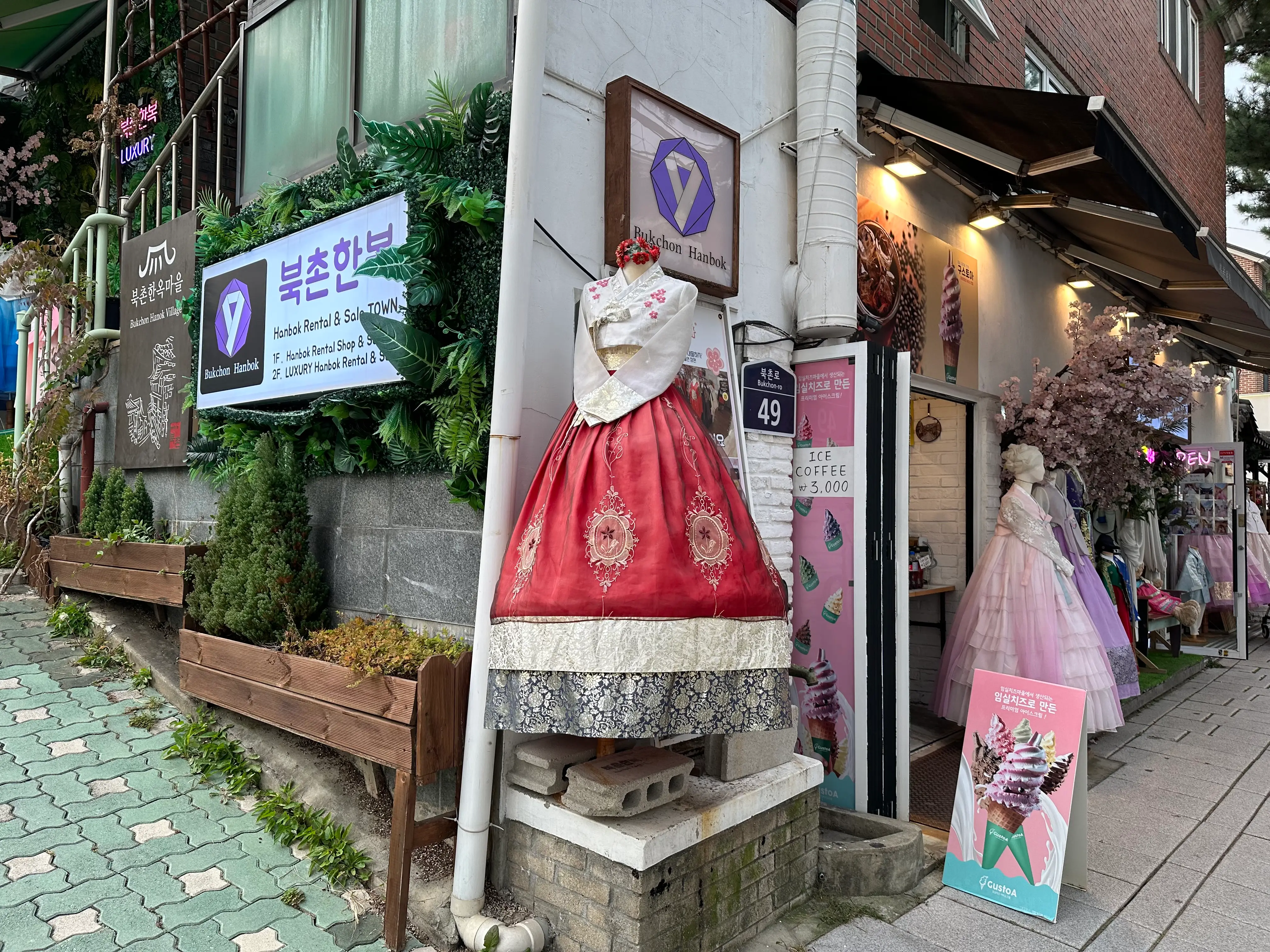
Buckchon hanok village Tourism tips 3 : Take Your Time and Relax
If you search “Bukchon Hanok Village hours” on Google, you’ll typically see “9 AM to 5 PM” listed as the opening hours, but in reality, this refers to the times when cultural events may occur within the village. The truth is, Bukchon Hanok Village doesn’t have set entrance hours like Gyeongbokgung or Deoksugung Palaces – it’s an open tourist destination, more like visiting a “village.” Therefore, you don’t need to worry about specific opening hours. The nearby shops also operate like typical Korean stores, staying open until late, often as late as 11 PM. Being a tourist area, they are open on weekends and holidays as well. So, forget about the time and leisurely savor the most beautiful scenery in Korea.

Buckchon hanok village Tourism tips 4 : Take photos from the top
When visiting Bukchon Hanok Village, you’ll notice many foreigners taking photos on their way up the hanok path. While that’s great, I highly recommend reaching the highest point to take photos overlooking the hanok village and the scenic skyline of Seoul all in one frame. The image on the bottom left shows the view from the entrance of Bukchon Hanok Village, while the one on the right captures the scene from the summit, revealing a much more stunning backdrop. Shooting from above the hanok village with the cityscape in the background allows you to capture the most picturesque “life shot” in Seoul.
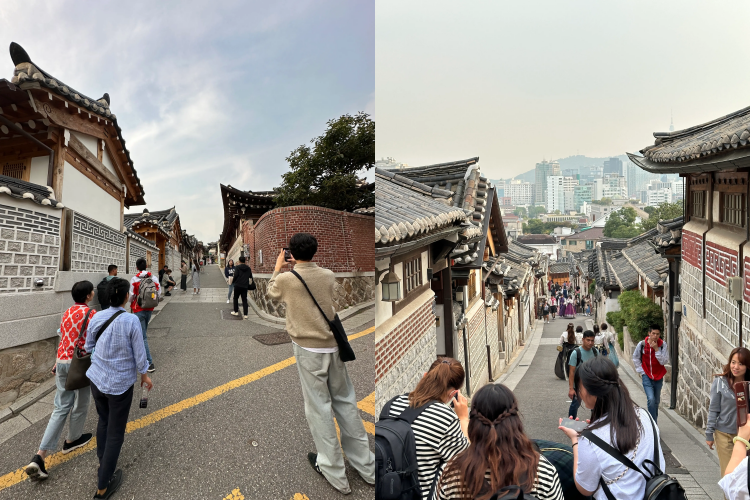
Buckchon hanok village Tourism tips 5: The Beauty of a Hanok Lies in Its Door and Wall Patterns
When taking photos against the backdrop of a hanok, I strongly recommend capturing images that prominently feature the patterns of the door and wall. The reason for this is that these traditional designs reflect the rich 5,000-year history of the Korean people. The intricate and delicate interplay of straight lines and subtle curves is truly beautiful. So, I recommend taking photos with a bright smile against this captivating background.
